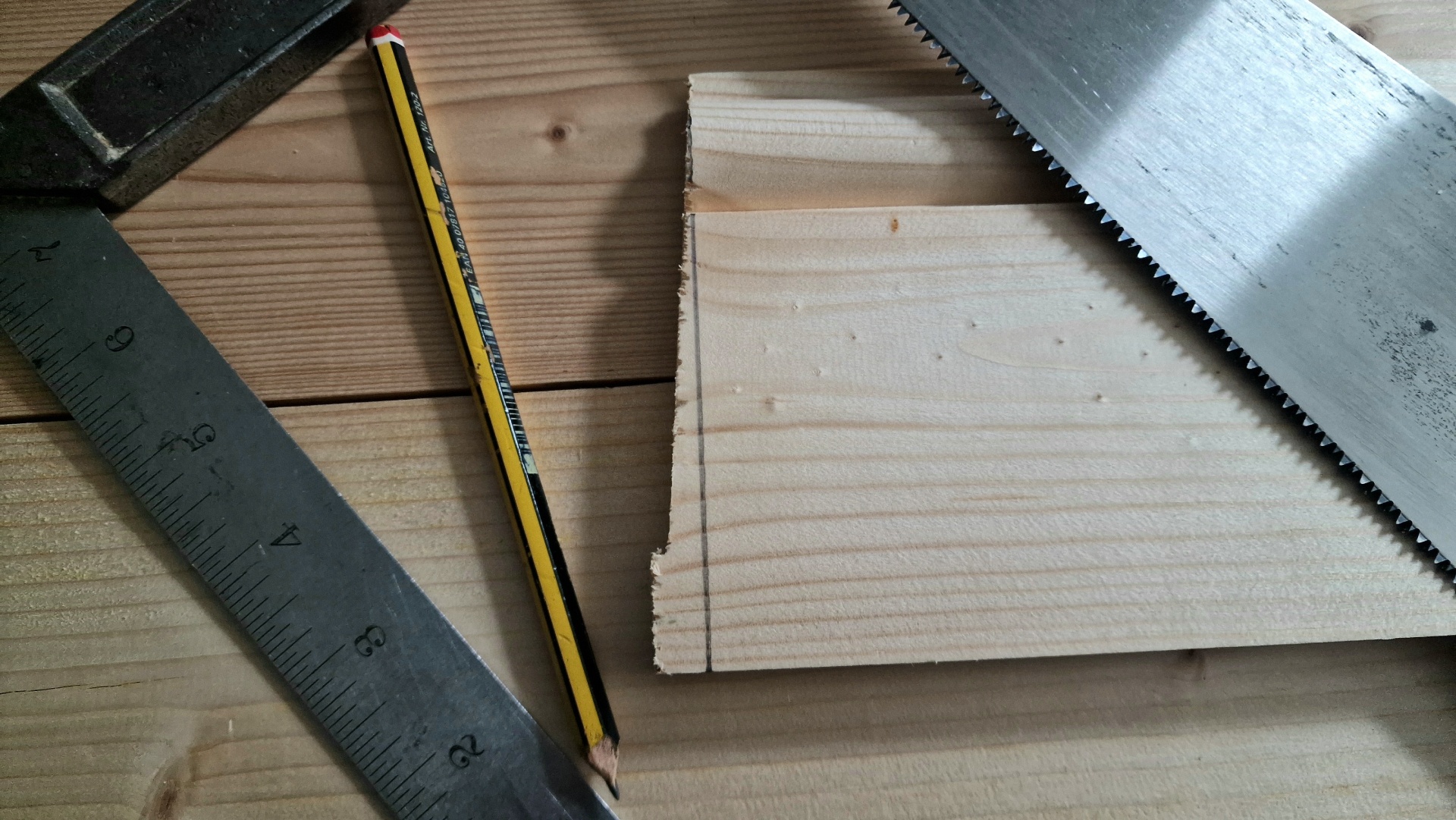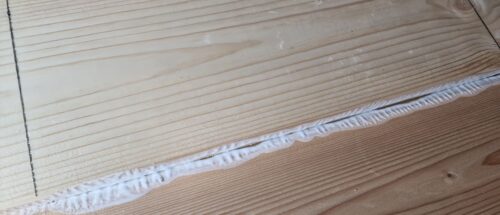The 5 Most Common Mistakes Woodworkers Make

Woodworking Mistakes
Let’s take a look at the 5 most common mistakes woodworkers make (and how to avoid them) because as woodworkers, we all know that mistakes can happen during the planning, design, or construction stages of a project. These mistakes can range from small issues that are easy to fix to major mistakes that can seriously impact the quality of the finished product.
Every woodworker, whether you’re a woodturner, wood carver or just love wood whittling will admit to making mistakes, we’ve all made a few in our time and it all makes for a good story so feel free to tell us all about your best mistakes in the comments section, I’m sure we’d all love to hear about them.
The most important thing is that we learn from them, and have gained just a little bit more experience. By understanding common mistakes and the factors that contribute to them, we increase our chances of success.
Some of the factors that contribute to mistakes in woodworking
By being aware of these potential issues, we can take steps to avoid making mistakes. Remember, the purpose of discussing the 5 most common mistakes woodworkers make is to learn from the experiences of others and improve our own skills. By understanding common mistakes and how to prevent them, we can create better finished products and increase our satisfaction with our woodworking projects.
Lack of Experience Or Knowledge
Starting off the list of the 5 most common mistakes woodworkers make is, lack of experience or knowledge. If you are new to woodworking, or if you are attempting a project that is beyond your current skill level, you may be more prone to making mistakes. That’s why it’s important to start with simple projects and gradually work your way up to more complex ones.
Poor Planning
Poor planning is another one of the 5 most common mistakes woodworkers make. Failing to properly plan out a project can cause issues during the construction process. This may include not accurately measuring materials, failing to consider the grain direction of the wood, or not adequately accounting for the tools and equipment needed to complete the project.
Inaccurate Cuts
Inaccurate cuts are another of the 5 most common mistakes woodworkers make in woodworking. This can be caused by using a dull blade, not properly clamping the material, or not following a straight edge. To avoid this, make sure to keep your tools sharp and well-maintained, and take the time to properly set up your work area.
Incorrect Use of Tools
Using the incorrect tool for a woodworking task, or using a tool in a way that it was not intended to be used, can lead to mistakes and subpar results. To avoid these issues, it’s important to familiarize yourself with the various tools available to you and understand their proper use.
Poor Quality Materials
Poor quality materials can also contribute to mistakes in woodworking. Using wood that is warped or has knots can make it difficult to achieve precise cuts and accurate joins. To avoid this, make sure to use high quality materials and inspect them carefully before starting your project.
The 5 Most Common Mistakes Woodworkers Make
- Not measuring and cutting accurately
- Using the wrong tools or techniques
- Failing to plan and prepare properly
- Skipping safety precautions
- Not allowing for proper drying and curing times
Tips for Avoiding Woodworking Mistakes
As a woodworker, it’s important to always be on the lookout for ways to avoid making one of the 5 most common mistakes woodworkers make, by understanding common mistakes and the factors that can contribute to them, you can take steps to prevent them. So, let’s get started!
Double-check measurements and cuts

This has to be at the top of the list of the 5 most common mistakes woodworkers make. It’s important to double-check measurements and cuts in your woodworking projects because accurate measurement and cutting are crucial elements in woodworking. Failing to measure and cut materials accurately can lead to numerous problems, including:
- Pieces that do not fit together properly, which can compromise the structural integrity of the finished product.
- Uneven or lopsided finished products, which can be visually unappealing and may not function as intended.
- Wasted materials, which can increase the cost of the project and be environmentally wasteful.
- Increased time and effort needed to correct mistakes, which can be frustrating and may lead to delays in completing the project.
By double-checking measurements and cuts, we can help to ensure that our projects are built accurately and efficiently. This can save us time, money, and frustration, and help us to create finished products that are of the highest quality.
Double-checking measurements and cuts may take a bit more time upfront, but it can pay off in the long run by helping to avoid costly mistakes and creating better finished products.
Choose The Right Tools And Techniques for Your Project
This one just had to be included in the list of the 5 most common mistakes woodworkers make. It’s important we choose the right tools and techniques for our woodworking projects, for example in the beautiful art and craft of wood carving where you could be working on a very detailed and challenging design and where you need to keep the wood rock steady, then using a good quality workbench or vise to securely hold the wood while you work is a must, using the wrong tools or techniques can lead to lots of problems, including:
- Inaccurate cuts and poor quality finishes, which can compromise the integrity and appearance of the finished product.
- Increased time and effort needed to complete the project, as using the wrong tools or techniques can be inefficient and may require additional steps to correct mistakes.
- Damage to the tools themselves, as using tools in a way they were not intended can lead to wear and tear or even breakage.
- Increased risk of injury, as using the wrong tools or techniques can increase the chances of accidents or mishaps.
Choosing the right tools and techniques for your project, will help to ensure that your woodworking projects are built accurately, efficiently, and safely.
Take The Time To Plan And Prepare Your Project
Taking the time to plan and prepare your woodworking project is really important for a number of reasons. Proper planning can help to ensure that your project runs smoothly and efficiently, and can help us to avoid making one of the 5 most common mistakes woodworkers make.
Some of the benefits of taking the time to plan and prepare your woodworking project include:
- Ensuring that you have all of the necessary materials, tools, and equipment on hand before you start. This can help to prevent delays and the need to make multiple trips to the hardware store.
- Creating a detailed plan or blueprint for your project, which can help to clarify your goals and ensure that you are working towards a clear end result.
- Identifying potential challenges or issues that may arise during the project, and coming up with solutions to address them.
- Helping to prevent waste by accurately estimating the amount of materials needed and avoiding unnecessary purchases.
- Allowing you to budget your time and resources effectively, and ensuring that you have enough time to complete the project to your satisfaction.
Setting time aside to prepare and plan your woodworking project can help to ensure that it is a success. By considering all of the factors that may impact your project, you can increase your chances of success and create a finished product that meets, or even exceeds your expectations.
Follow Proper Safety Procedures
Following proper safety procedures is vitally important in woodworking because woodworking can be a hazardous activity if precautions are not taken. Woodworking tools and equipment can be dangerous if used improperly, as woodworking projects often involve the handling of heavy materials and the use of sharp objects.
Some of the potential risks associated with woodworking include:
- Injuries from power tools, such as cuts, bruises, and amputations.
- Injuries from hand tools, such as cuts, bruises, and punctures.
- Injuries from heavy materials, such as strains, sprains, and back injuries.
- Injuries from falling objects, such as cuts, bruises, and head injuries.
To reduce the risk of injury, and avoid making one of the 5 most common mistakes woodworkers make it’s important that we all follow proper safety procedures when working on our woodworking projects. This may include wearing protective gear, such as safety glasses, earplugs, and gloves, and following the manufacturer’s instructions for using tools and equipment. It’s also important to keep your work area clean and organized, and to use caution when handling heavy materials or sharp objects.
Allow for Proper Drying And Curing Times

This one is where patience is called for. Allowing for proper drying and curing times is important in woodworking because it can impact the quality and longevity of the finished product. Wood is a natural material that is prone to changes in moisture content due to fluctuations in humidity and temperature. These changes can cause wood to shrink, swell, warp, or crack.
To minimize these issues, it’s important to allow for proper drying and curing times when working with wood. This may include:
- Allowing wood to acclimate to its environment before starting a project, particularly if the wood has been stored in a location with different humidity levels than the project area.
- Allowing finishes, such as paint, stain, or varnish, to dry and cure fully before using or handling the finished product.
- Allowing glue to dry and cure fully before handling or moving the project.
- Allowing wood to dry fully before sanding or cutting it, as green or moist wood can be more prone to damage.
I’m sure everyone of us has said the words ‘I should have given that a little bit more time’ and that’s a learning curve, but it’s also one of the 5 most common mistakes woodworkers make, but just by allowing for proper drying and curing times, you can help to ensure that your woodworking projects are of the highest quality and will stand the test of time. This can save you time and effort in the long run, as you won’t need to redo or repair projects that have been affected by changes in moisture content.
We Live And Hopefully Learn
Ask any experienced woodworker, and they’ll tell you that learning from and avoiding common mistakes is key to success in this field. Whether you’re a woodworking beginner or a seasoned pro, mistakes can happen at any stage of a woodworking project. That’s why it’s important to be aware of common mistakes and take steps to avoid them.
Learning from and avoiding the 5 most common mistakes woodworkers make is crucial for any woodworker who wants to create high quality finished products. Mistakes range from small, easily fixable issues which often come as a relief, to major mistakes that can compromise the integrity of the finished product, which is so frustrating and disappointing.
And finally, thanks for dropping by and don’t forget to tell us about your best woodworking mistakes in the comments section below, we’d all love to hear about them.